The Mazda MX-5 has been awarded with a five-star safety rating from the Australasian New Car Assessment Program (ANCAP). Previously, the roadster was given a four-star rating by ANCAP’s sister organisation Euro NCAP in October last year.
Confused? Well, the reason behind the lower rating from Euro NCAP is because the MX-5 does not come with active safety equipment such as autonomous emergency braking (AEB) — something that isn’t required under ANCAP’s criteria for a five-star rating, at least for now.
In ANCAP’s test report, the MX-5 managed to score 35.2 out of a possible 37 points, with a total of 1.8 points being deducted in the head/neck and lower leg portions of the frontal offset test. More impressively, the roadster managed to score the highest ANCAP pedestrian protection score ever with 33.72 out of 36 points, besting even the Volvo V40 (31.76).
One of the reasons behind the notable result is the MX-5’s active or ‘pop-up’ bonnet, which is designed to provide extra clearance between a pedestrian’s head and the vehicle’s stiff components beneath in the event of an accident. The five-star ANCAP rating is applicable to all variants of the sports car sold in Australia built since September last year.
While giving the MX-5 praise, ANCAP CEO, James Goodwin still highlighted the MX-5’s lack of active safety equipment. “Autonomous emergency braking, active lane support and speed assistance systems are lacking. As a newly designed model – one that is likely to remain in the market for some time – it is concerning to see these important safety technologies have been overlooked,” he said.
ANCAP, together with the Australian Medical Association (AMA), are pushing the Australian federal government to make compulsory a number of safety features, including AEB. A study by Euro NCAP and ANCAP revealed that the system significantly reduces the number of road accidents by up to 38%.
The Malaysian-spec Mazda MX-5 is currently on sale, priced at RM219,999 on-the-road without insurance. In terms of safety, the roadster comes equipped with four airbags, ABS with EBD and Brake Assist, Dynamic Stability Control (DSC), High Beam Control (HBC) and Lane Departure Warning System (LDWS).
Looking to sell your car? Sell it with Carro.

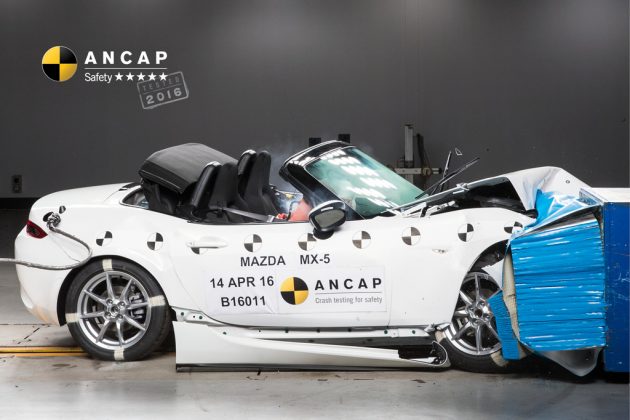


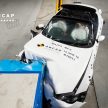
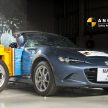
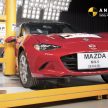
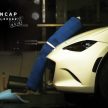
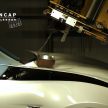
























ANCAP CEO James Goodwin must come and try the Perodua cars again. Until today, Perodua cars still got no VSC and even ABS.
ABS was compulsory in Europe in the late 80s. VSC was compulsory in Europe over 10 years ago.
Yet, Perodua cars can score many stars. How?
Safety here is a joke la. Govt edi made compulsory all cars must at least have 2 airbags.
Tan Chong so badass, sell Almari with 1 airbag, and say their car is very strong, 1 airbag is enough. Until today govt no balls to penalise them.
Stupiak TC, u think ur almari is Volvo? Nokia 3310?
ASEAN NCAP doesnt belong to MY Gov, neither do EU NCAP belong to any EU country
MX-5 only score 4-star in global ANCAP, if not mistaken.
If the Iriz so good, test it in ANCAP lar. Wait, the Proton they tested there is higher standard than Malaysia’s one.
Pity Malaysians have to buy sub standard Proton cars.
In Europe, if you can got no VSC or ABS, automatically fail their NCAP test.
No idea how come Proton (saga, waja, etc) and Perodua can even get stars in our Ncap
Why are our safety standards lower? Simple. Asean countries are considered as 3rd world where basic needs are more important ie food clothing and shelter. Safety takes a back seat here. Only the elites in the society are entitled to the preveliege. As for the masses, be thankful that you even own a car. That is why the Axia is the top seller in malaysia.
The toughest tests are the small overlap frontal impact and ‘moose’ tests. For any safety rating, these results would matter most, to me at least.
Small overlap is 25% frontal impact to a rigid barrier vs 40% in Euro and Aussie tests. Not sure if Asia is doing it. Only IIHS US NCAP is doing it now. Most cars fail miserably. It makes perfect sense, if you’re driving fast and a car swerves into your lane, you slam your brakes and try to avoid the car in front; in most cases a small part of your front will hit the car in front. Frontal impact tests with more than 40% coverage will not show the damage – the 25% test can be catastrophic and much worse than a full frontal impact.
Seriously, I’ve actually been in the situation when a lorry emergency-braked in front of me. My car had no airbags nor ABS, brakes locked and I just told my friend to hang on and slammed into the back of the lorry direct head-on full frontal. The front crumpled up to radiator and both of us were perfectly fine. After watching small overlap tests, I realised how lucky I was to be alive that traffic was heavy and didn’t swerve my car. A small overlap crash would have caused either me or my friend to have severe damage if I did.
The ‘moose’ test is conducted in Sweden only, and almost all cars bar Volvo and Saab fail this. Also very realistic, as you swerve to avoid an obstacle (a moose, perhaps), into the next lane, then immediately swerve back to avoid oncoming traffic. If your car can do this well, probably would avoid major damage.
Only 200k?
It’s good value for money if you are hypnotized or delusional …
Everyone should just buy the Axia even though it’s overpriced as well but no choice…
A lot of people don’t know the differences in standards between the various Global NCAP members… and to be honest, I don’t know the exact details either, but to roughly summarise, from most to least strict;
IIHS (USA) > EuroNCAP > ANCAP (Australia) > ASEAN NCAP > Latin NCAP (South America)
These are all the well-known NCAP members, the ones most of us may have heard of. There’s also C-NCAP (China), KNCAP (Korea) and JNCAP (Japan), but I’m not sure how their standards compare with the rest, but all three should be stricter than ASEAN NCAP. India also has a NCAP, but theirs isn’t a member of Global NCAP.
Another often overlooked aspect is the year in which the car was tested. The same 5-star EuroNCAP car from 2008 will probably only qualify for 3 or 4 stars if re-tested in 2016. Standards change yearly (as in, they get more strict), and this is why the whole ‘5-star rating’ label can get very, very confusing at times. As a rule of thumb, a 5-star rating may only be valid for 3 or at most 5 years. Beyond that, it becomes invalid.